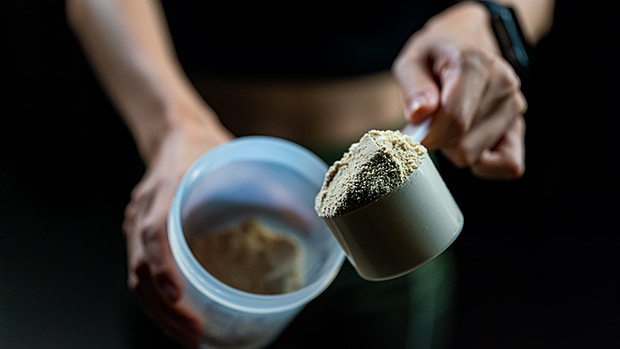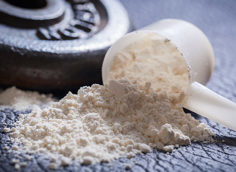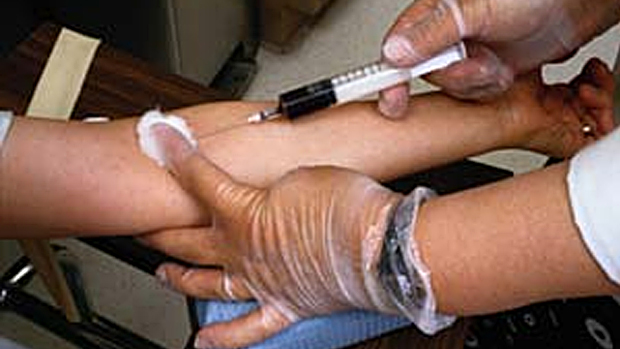There will come a time when we won't be arguing about the anabolic properties of various protein sources like meat, eggs, or milk. Doing so will be pointless because there just doesn't appear to be a way that production of those protein sources will be able to meet the growing global demands.
Instead we'll be forced to look for (and argue about) alternate sources of protein like, well, insects – more specifically, larvae, grubs, or even caterpillars.
See if you can stifle your revulsion to consider the logic of it: They're easy and cheap to grow because they feed on any plant matter you throw at them, fresh or not. More importantly, they could be produced on a more viable and sustainable commercial scale than any other currently imaginable protein source.
Maybe you're asking, "Can we at least eat the adult insects instead of the larvae? You know, the slightly less disgusting six-legged types they coat with chocolate?"
Unfortunately, no. As the larvae pupate into adults, much of the mass of the metamorphosizing insect turns into chitin, a protein-like polymer that's the source of the crunch you hear when you step on an insect.
This chitin is largely indigestible to humans, so better to eat insects when they consist almost entirely of protein, fat, and a little carbohydrate, i.e., in their juicy grub or larval stage.
The question that might remain, though (other than would humans be able to put aside their disgust), is if protein derived from grubs or larvae would have adequate protein kinetics (e.g., digestion) and muscle protein synthesis rates?
It appears that some Dutch scientists have already figured this out for us and yeah, it seems like insect protein, in this case, lesser mealworm protein (Alphitobius diaperinus), works as well as milk proteins in growing muscle.
What They Did
The scientists somehow recruited 24 healthy young Dutch men to participate in the study. After an overnight fast, they each received IV infusions of isotope-labeled amino acids (which would allow them to track the assimilation of the mealworm and milk proteins they'd ingest later).
All 24 men were then taken through an exercise session that consisted of a warm-up and 5 sets of leg press and leg extension. Immediately afterwards, subjects were randomly assigned to drink either 30 grams of milk protein or 30 grams of protein derived from ground-up and pulverized lesser mealworm.
Arterialized blood samples were then taken at 20, 40, 60, 90, 120, 150, 180, 240, and 300 minutes post-exercise. Muscle biopsy samples were also taken at 120 minutes and 300 minutes post-exercise.
What They Found
Protein from lesser mealworms presented strong anabolic properties that didn't differ from those of milk. As far as amino acid absorption rates, scientists weren't able to detect any measurable differences between the two protein sources.
As an added bonus, the grubs contain high amounts of micronutrients and antioxidants, prompting the researchers to write, "...our data provide a strong incentive for incorporating insects into the Western diet."

What to Make of This Info
I know, I know, you're thinking that there's no way your lips will ever touch mealworm protein, or protein from anything else that was once a grub, larva, or caterpillar.
Realize, though, that any insect-derived protein would likely be colorless, odorless, and tasteless, except for the vanilla, chocolate, or even mango-flavored iterations that would inevitably follow.
I can also tell you that eating insect protein is already common in Asia, Africa, and South America, but that might not mean spit to you. I realize that food tastes are culturally driven.
Case in point, we Americans eat plenty of things that would be deemed disgusting in other parts of the world. But forget all that. The fact is, eating insect protein makes so much sense that it can't be ignored.
I can even imagine we'll get to the point where we'll raise our own lesser mealworms at home some day – as long as we don't make the classic rookie mistake that every 4H member knows not to make: giving your lesser mealworms names.
You do that and you'll have trouble keeping the tears from streaming down your face as you dry out, pulverize, and chug down poor Jamie, Sandy, Mealy, Todd, Fat Boy, Baxter, etc., etc.
So don't name them.
Source
Wesley JH Hermans, et al. "Insects are a viable protein source for human consumption: from insect protein digestion to postprandial muscle protein synthesis in vivo in humans: a double-blind randomized trial." Am J Clin Nutr, 2021;00:1-11.





